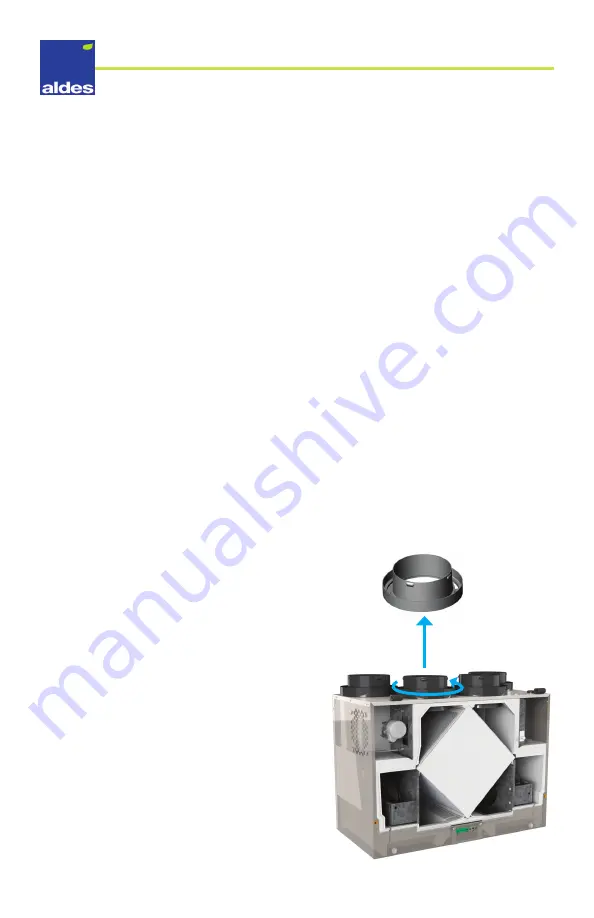
Residential HRV/ERV
11
Locating the Air Exchanger
The device must be located in a place where the temperature is always above freezing.
Choose a location for the device where the ducts will be short with minimal use of
elbows. This ensures that the system functions optimally.
Recirculation Using Fifth Ports (Optional)
Ducted
Run the duct to an area with clean indoor air, such as a hall or living room. This configuration
requires the use of the fifth collar that is shipped loose with the unit.
Non-Ducted
This configuration recirculates air surrounding the unit. It DOES NOT require the use of the
fifth collar. For this configuration to work properly, the unit MUST be located in area with
clean and fresh air.
Ducting Materials
1. Where ducting passes through concealed spaces (walls, ceiling-floor assemblies), the
ducting should be metal to offer less resistance to airflow and permit duct cleaning.
2. Where the ducting remains permanently accessible, 5 to 10 feet of insulated flexible
duct should be used between the HRV/ERV and all interior supply and exhaust registers
to reduce fan noise passing the ducting to interior spaces.
Connecting the Ducts
For the air exchanger to run optimally, place the ducts so they are as straight as possible.
Ducts should be kept short and have as few bends or elbows as possible to maximize airflow.
Forty-five degree elbows are preferred to 90-degree elbows. Use “Y” tees rather than straight
tees whenever possible.
All ducts going through unheated areas must
be insulated. The ducts between the exterior
vent hoods and the HRV/ERV must be insulated
and covered with a vapor barrier. See the next
section “Vent Hood Locations”.
These units are equipped with twist-in collars to
simplify the process of connecting flexible duct
to your ventilator. Flexible duct is recommended
to provide vibration isolation between the unit
and duct system. Start by determining the
required duct length to reach each respective
collar, and cut as required. Remove each duct
collar by unscrewing them from the locking tabs.
Connect the ducts to the removed collars using
duct tape and flexible duct straps. If rigid duct
is used, avoid attaching with screws to the duct
collars, as they may interfere with the damper
operations at each duct collar. Reinstall collars,
with duct attached, to their respective labeled
ports on the HRV/ERV by lining up locking tabs
and twisting on in a clockwise direction.












































